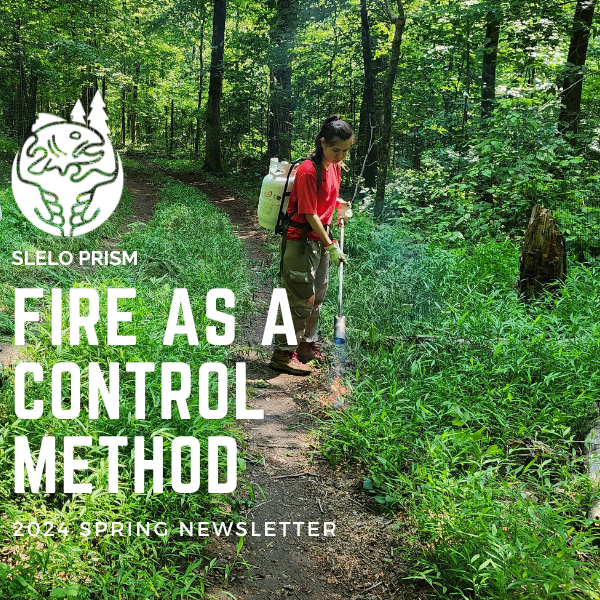This article was featured in the 2024 Winter Newsletter by Budd Veverka– Director of Land Management, Mianus River Gorge, INC.
In 1953, a group of concerned neighbors of a 60-acre old-growth hemlock forest in Westchester County NY convinced the fledging Nature Conservancy to purchase their first parcels of land to protect them from development. This land, designated a national natural landmark in 1962, has become the 938-acre Mianus River Gorge Preserve.
With the Mianus River Gorge’s proximity to New York City and its populous suburbs, invasive species are abundant. Annually, our Preserve Steward and I actively manage over 50 species of invasive plants and forest pests through manual, chemical, and biocontrol methods. Many invasives are native to East Asia, a region of the world where fire is uncommon, and most species from this region are intolerant to fire. This got me thinking that prescribed fire could be an extremely effective tool for invasive species management. Through my previous work managing land with the Indiana Department of Natural Resources, I had experience with setting more than 300 acres on fire in a single day, but the sheer mention of using fire in Westchester County to control invasives was initially meant with laughter or disgust.
To help support my claim, I found some published literature for methods to effectively kill Japanese stilt grass and Japanese barberry using the controlled fire of a high BTU weed torch. To test it out, I purchased a 400,000 BTU backpack-mounted weed torch on Amazon; my experience with fire made me comfortable using this equipment.
Since propane is expensive, we wanted to know if our burning efforts would be a cost-effective approach, so we had a student in the high school science research program conduct a research project to compare the time and cost of burning versus other methods for treating Japanese stilt grass. The study found that the time saved by burning made it the most affordable method.
Currently, our organization uses 4 torches to control invasive plants when the conditions are right. It is important to point out that we only conduct burnings when it is raining (but not pouring), just after a rainfall, or early in the morning when it is very dewy. We found that burning stiltgrass is most effective when the plant is less than 16 inches in height. It’s best to start treatments in areas where there is more sunlight and it can grow faster and to save the more shaded areas for later in the treatment period. Move the fire quickly across the plant and wilt the leaves, taking care not to burn the plant to the ground as this pushes all the energy into the roots and the plant may re-sprout.
We have continued to experiment with this method for other plants such as pachysandra, yellow arch-angel, and bishops weed, and it appears to be most effective on annuals and biennials such as over-wintering and early-season garlic mustard.
We also use weed torching effectively on Japanese barberry where we will torch the root crown of the shrub for 25-30 seconds. Because this is a long burn in one spot, for safety, we typically do this when snow is on the ground. We have also found that is it highly effective to cut larger shrubs in the summer and fall and torch the re-sprouts in late winter and early spring, again when we have snow or the ground is very wet.
My hope is, that as invasive species management continues to gain more support publicly and wildfire becomes more common in the northeast, people and agencies will eventually feel more comfortable with the use of prescribed fire. Until then, weed torching is an effective method for many common invasive plants in our region and another important tool to have in our management toolbox.
If you have questions about the methods mentioned in this article, please reach out to Budd Veverka, the Director of Lands Management at the Mianus River Gorge, INC. at budd@mianus.org.

Please fill out the form below to be added to our listserv and receive our seasonal newsletter, event invitations and other announcements.
Related
About the Cover: 2023 Winter NewsletterIn "Newsletter"
Biological Diversity, Climate Resiliency & Invasive SpeciesIn "Newsletter"
Collective Conservation ImpactIn "Newsletter"


